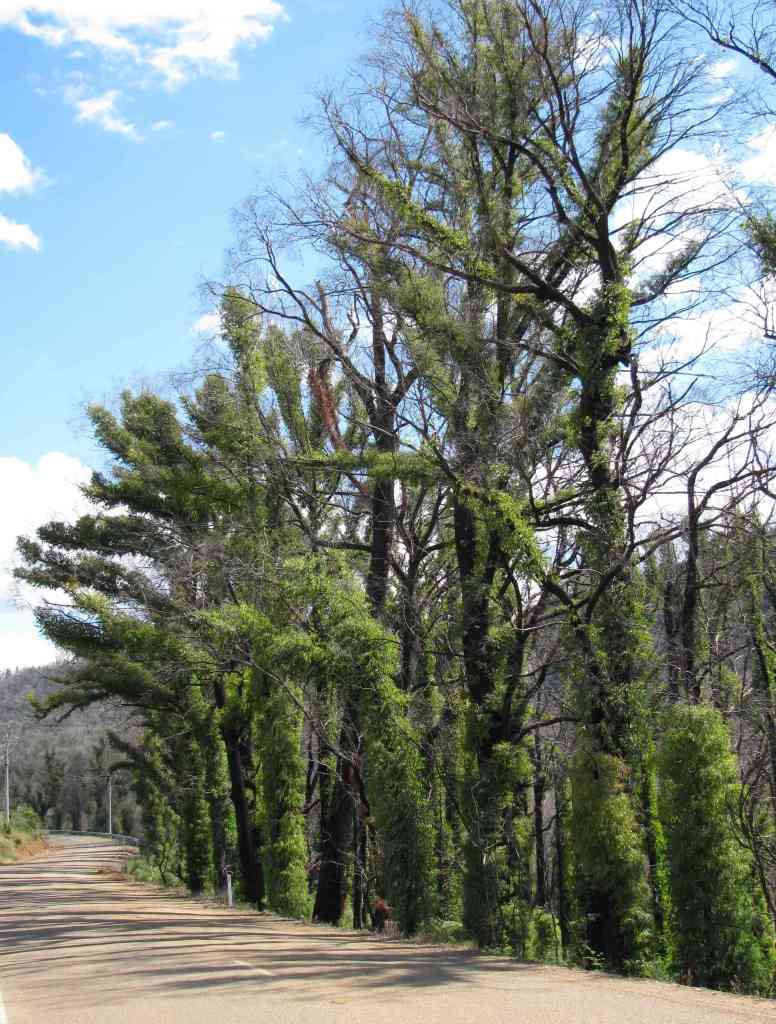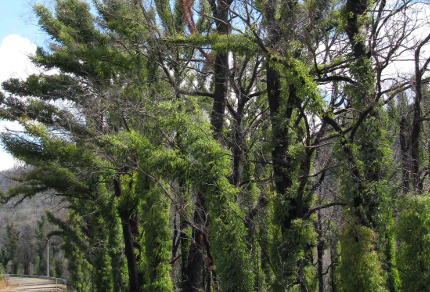For the first time in months, I carried an umbrella when walking to the store this afternoon, rain spitting down around me, the street pavement damp, strips and small puddles of water lying against curbs. Mynas and rainbow bee-eaters ruffled rain-wet feathers while perching on power lines, and Castle Hill loomed grey in the distance, shrouded by a veil of thin rain. During the night, rain pounded onto our metal roof in an echo of the Wet, and off and on throughout the day dripped and spilled from a leaden sky. Drops of water hung like a row of prisms suspended from the edge of the metal awning overhanging the window in front of my writing desk, the prisms falling like clear toffee dripped from a spoon when new, tentative showers touched the awning, the slow drops metamorphosing into curtains of silver beads when the ferocity of rain increased.
After purchasing chicken, Brussels sprouts, bananas, and zucchinis that my son Janis may have picked in a market garden near Bundaberg [“I didn’t know Australia could eat this many zuccinis, its ridiculous, we pick 500 buckets a day sometimes on this one farm.”], I exited the store to find that the sun had bored a hole in the cloud. Thick, hot air wafted up from the bitumen in a clinging portent of the humid tropical summer now closer in the future than in the past. I recalled our first days in Australia, when Vilis and I almost reeled from the intense light, the intense heat, the intense humidity. We ran and skated and walked the parkway near the home we house-sat, with sweat pouring from our bodies, and clung to the air-conditioned comfort of the living room and guest room, the heat in the remainder of the house hitting us like a furnace blast.
On my return home, while a fresh downpour renewed the bead curtain on my writing-window awning, I indulged my curiosity about Australian weather by researching extreme events. I read of the Federation Drought of 1895-1902 (so-called because it bracketed the amalgamation of Australian states into a single federation in 1901), during which cattle stations lost nearly half their stock, sheep numbers plummeted by more than a third, and the mighty Darling River dried up.1 In 1967-68, another severe drought occurred, a photograph of it showing billowing clouds of dust rolling across a Victorian landscape.2
I learned that thunderstorms, with their associated hail and flash flooding, cause more damage throughout Australia than any other natural event. A photograph taken in Sydney in 1971 showed hail piled like drifts of snow on the city streets after a winter storm.
Cyclones take their toll, too. In early 1918, a pair of them devastated the Queensland centres of Mackay and Innisfail (both of which Vilis and I have travelled through), flattening buildings, generating massive flooding, killing tens of residents, and sending storm surges of 3 to 4 metres sweeping hundreds of metres inland.3 In southwestern Western Australia, cyclonic winds teamed up with extreme heat to fan bushfires and wreak property destruction three times over, in 1937, 1961, and 1978.5
Curious about record temperatures, I learned that the Marble Bar district of the Pilbara in Western Australia experienced the world’s longest continuous heat wave of 100°F (37.8°C) or higher. The wave spanned 160 days between October 31, 1923 and April 7, 1924, pushing temperatures to or above the hundred-degree mark on each and every day.4

Regenerating Eucalypts in Marysville, Victoria, a year after the Black Saturday Bushfire (© Vilis Nams)
For sheer loss of human life, though, nothing beats the Black Saturday bushfires of last year,* when 173 people died in firestorms that swept through Marysville, Kinglake and 76 other communities northeast of Melbourne.6 Vilis and I drove through Marysville in March, saw the scorched road signs, the damaged and ruined buildings, some being rebuilt, and the blackened eucalypts with their dead-looking branches belied by vividly green shoots sprouting right through the trees’ bark. The eucalypts belong to fire. Their lives depend on extreme weather events, which I hope remain no more than a curiosity for me.
*Since writing this post, I’ve learned that Cyclone Mahina, which smashed into Cape York in March of 1899, holds the tragic record of worst natural disaster in Australian history, having caused the deaths of more than 400 people, many of them sailors on pearling vessels. It’s referred to as the Pearling Disaster.
References:
1. Australian Government, Bureau of Meteorology. Climate Education: Drought. © Commonwealth of Australia 2010 Bureau of Meteorology. Accessed 10-Aug-2010. http://www.bom.gov.au/lam/climate/levelthree/c20thc/drought.htm
2. Australian Government, Bureau of Meteorology. Climate Education: Storms. © Commonwealth of Australia 2010 Bureau of Meteorology. Accessed 10-Aug-2010. http://www.bom.gov.au/lam/climate/levelthree/c20thc/storm.htm
3. Australian Government, Bureau of Meteorology. Climate Education: Cyclone: Queensland 1918, a devastating couplet. © Commonwealth of Australia 2010 Bureau of Meteorology. Accessed 10-Aug-2010. http://www.bom.gov.au/lam/climate/levelthree/c20thc/cyclone2.htm
4. Australian Government, Bureau of Meteorology. Climate Education: Temperature: Marble Bar heat wave, 1923-24. © Commonwealth of Australia 2010 Bureau of Meteorology. Accessed 10-Aug-2010. http://www.bom.gov.au/lam/climate/levelthree/c20thc/temp1.htm
5. Australian Government, Bureau of Meteorology. Climate Education: Fire: Cyclone and fire – Southwest WA: 1937, 1961, 1978. © Commonwealth of Australia 2010 Bureau of Meteorology. Accessed 10-Aug-2010. http://www.bom.gov.au/lam/climate/levelthree/c20thc/fire1.htm
6. Australian Government, Attorney-General’s Department. Emergency Management in Australia: Historical Disasters – Black Saturday Bushfires. Updated 9-Mar-2010. Accessed 10-Aug-2010. http://www.ag.gov.au/www/emaweb/emaweb.nsf/Page/EMALibrary_OnlineResource_HistoricalDisasters_EmergencyManagementinAustralia-HistoricalDisasters-BlackSaturday#about


